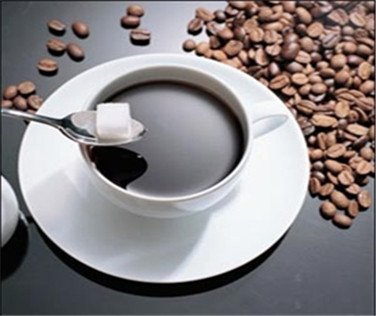Why does coffee taste bitter and sour? Why does coffee taste different? Where is coffee?

The bitterness of coffee has always been controversial. Some people say: how can it be called coffee if it is not bitter? Some people say that good coffee has a pleasant bitterness (so-called sour). There are many people say: good coffee should not have a bitter taste! Suffering is not good!
And why is coffee bitter? Why is it called pleasant bitterness?
When it comes to the bitter ingredients of coffee, perhaps most people's first reaction is caffeine! That caffeine is really a bad guy! It turns out that the bitter ingredient of caffeine comes from raw beans, is a bitter aftertaste, and its influence is only about 10% at most.
So what is the main ingredient of coffee that brings bitterness?
In order to solve this mystery that has plagued us for many years, Thomas Hofmann, a scientist at Technical University of Munich in Germany, decided to study the bitterness of coffee.
He filtered the brewed coffee and found that some of the molecules with the smallest molecular weight tasted the bitterest. So he used mass spectrometry to conduct a series of experiments and identified a molecule called chlorogenic acid lactone "chlorogenic acid lactone" as the culprit. (for convenience, let's call it Little Green.) Little Green has been around since the beginning of raw beans.
If we want to talk about Xiaolu, we must first talk about chlorogenic acid. To put it simply, chlorogenic acid exists in most plants and is produced by plants in the process of aerobic respiration. The small green is the coffee beans in the roasting process, decomposed from chlorogenic acid.
Does the baking degree have any effect on Little Green?
To this end, the researchers determined the content of small green in a series of coffee with different roasting degrees. Studies have shown that in the roasting process of coffee beans, the small green will increase with the deepening of the roasting degree. In light and moderate roasting, Little Green will only produce mild bitterness, which is what we call coffee characteristic, pleasant bitterness. As the baking time increases, the small green will be decomposed again and replaced by vinyl catechol polymer, which is the source of strong bitterness.
In this way, it is not difficult for us to understand why there is a saying in the world of curry-shallow sour, deep bitter. What we call pleasant bitterness is chlorogenic acid, and unpleasant bitterness is vinyl catechol polymer.
Does it mean that the more chlorogenic acid, the better coffee with bitter taste?
The answer is, of course, no. Generally, the more chlorogenic acid in raw coffee beans, the worse the quality of cup testing. Many defective beans also have a lot of chlorogenic acid, so it is not the more chlorogenic acid the better.
For example, robusta coffee beans contain 7% Mel 11% chlorogenic acid, while Arabica coffee beans contain only 5% Mel 8% chlorogenic acid.
Is the deep-roasted coffee beans bad?
A cup of coffee is a complex drink made up of more than 30 chemicals, and it is these "compounds" that determine the taste, aroma and acidity of coffee. It is not that the bitterness caused by deep roasting is bad, but that each type of coffee bean has its own baking degree. The baker will be based on each
Important Notice :
前街咖啡 FrontStreet Coffee has moved to new addredd:
FrontStreet Coffee Address: 315,Donghua East Road,GuangZhou
Tel:020 38364473
- Prev

Coffee control may not know coffee knowledge coffee roasted coffee with Arabica coffee
Coffee originated from dancing goats? Coffee was originally used as food? Espresso does not refer to the type of coffee, but to the method of brewing. Coffee fans, let's take a look at the following 13 truths about coffee that you may not know. Coffee originated from the legend of dancing goats, when Ethiopian shepherds saw their goats become active and dance after eating coffee berries.
- Next

Petty bourgeoisie must know 13 coffee alternative uses what is the use of coffee besides drinking? To order coffee.
The leisure drink of the post-60s and post-70s is tea. In the post-80s, coffee has become a drink in the cup of young people. However, in addition to the refreshing effect of coffee, coffee at home can also have other alternative uses. Coffee alternative use 1, can let you no longer have a headache! A clinical trial in Illinois found that caffeine, which slows down the blood flow of blood vessels in the human body, can also reduce the intensity of headaches and
Related
- Customers have "changed" Manner's new products! Shop assistant: Please don't mess around!
- Remove sockets in customer areas at Starbucks stores?! Netizen: I won't go if I really tear it down
- What is the difference between the taste steps of sun-dried coffee and washed coffee? Why is sun-cured coffee sweeter and washed coffee sour?
- The recipe for salty grapefruit dirty is revealed! Coffee Festival salty grapefruit dirty coffee making materials parameters ratio milk share!
- How about the flavor of Sunlight 74158 at Sidamo Banshaha Mathieu Processing Factory in Ethiopia? 74158 Share the proportion of coffee brewing parameters!
- What effect does Italian American coffee with filter paper have? Will coffee taste better if it is put on filter paper at the bottom of the powder bowl?
- What is the color difference in coffee beans? What are the characteristics of honey processed coffee beans? Why are the anaerobically treated coffee beans uneven in color?
- How does novice Xiaobai quickly get started and make coffee? Newbies learn to make coffee by hand and share the specific steps and process process!
- Costa tea has a shelf life of 100 years?! Expert: Unable to verify
- It's a huge uproar! American milk addition was rejected by Manner employees?!

